Visible Multi Object Spectrograph

The Visible Multi-Object Spectrograph (VIMOS) is a wide field imager and a multi-object
arcminutes each, with gaps of 2 arcminutes between them.[1] Its principal investigator was Olivier Le Fèvre
.
The Franco-Italian instrument operates in the visible part of the spectrum from 360 to 1000
nanometers (nm). In the conceptual design phase, the multi-object spectrograph then called VIRMOS included an additional instrument, NIMOS, operating in the near-infrared spectrum of 1100–1800 nm.[3]
Operating in the three different observation modes, direct imaging, multi-slit spectroscopy, and integral field spectroscopy, the main objective of the instrument is to study the early universe through massive redshift surveys, such as the VIMOS-VLT Deep Survey.[4]
VIMOS saw its first light on 26 February 2002, and has since been mounted on the Nasmyth B focus of VLT's Melipal unit telescope (UT3).[5][6]
It was retired in 2018 to make space for the return of CRIRES+.[7]
Gallery
-
Galaxy NGC 7424 seen by VIMOS
-
VIMOS takes its first light image of galaxy NGC 5364
-
A triplet of galaxies seen by VIMOS
-
The Antennae Galaxies, one of VIMOS' first images
-
VIMOS images the 500 million light years distant galaxy cluster ACO 3341
-
Galaxy NGC 2613, a spiral galaxy that resembles our own Milky Way
-
VIMOS sees cluster NGC 6118 at a distance of 80 million light-years
-
Messier 100 seen in different filters by VIMOS (left) and FORS 1. (Note supernova SN 2006X in the middle of the right image, just above the lower main spiral arm).
-
Close-up of VIMOS
See also
- List of instruments at the Very Large Telescope
References
- ^ a b "VIMOS – Visible Multi Object Spectrograph (Summary)". ESO. 19 December 2013. Retrieved 2 August 2015.
- ^ "VIMOS – General Description (Overview)". ESO. 23 March 2013. Retrieved 2 August 2015.
- ^ "VIMOS and NIRMOS: Status Report" (PDF). ESO. March 1998.
- ^ "New Light on Dark Energy—Probing the cosmic Web of the Universe". ESO (eso0804, Science Release). 30 January 2008.
- ^ "VIMOS—Visible Multi-Object Spectrograph". ESO. Retrieved 2 August 2015.
- ^ "VIMOS—a Cosmology Machine for the VLT. Successful Test Observations With Powerful New Instrument at Paranal". ESO (eso0209, Science Release). 13 March 2002.
- ^ "Paranal – decommissioned instruments". Retrieved 21 July 2021.
- ^ Largest Galaxy Proto-Supercluster Found - Astronomers using ESO's Very Large Telescope uncover a cosmic titan lurking in the early Universe, European Southern Observatory (ESO), 17 October 2018, Science Release eso1833, retrieved 19 October 2018


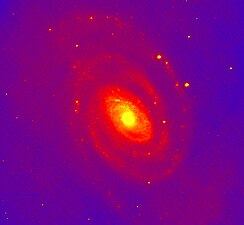
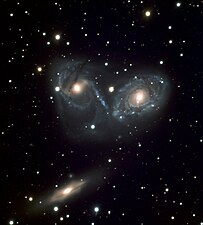


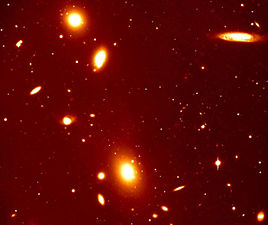
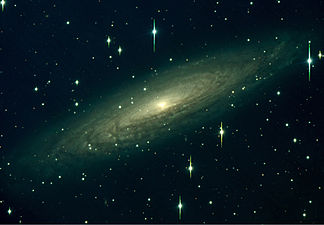
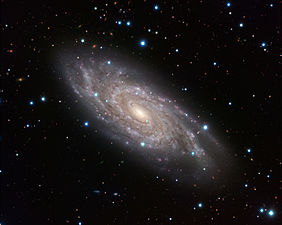

![Visualization of the Hyperion proto-supercluster found within COSMOS seen by VIMOS.[8]](http://upload.wikimedia.org/wikipedia/commons/thumb/c/c7/The_Hyperion_Proto-Supercluster.jpg/400px-The_Hyperion_Proto-Supercluster.jpg)
